Formulation Technology Platforms
Formulation technologies in pharmaceuticals refer to the methods and processes used to combine different chemical substances, including the active drug, to produce a final medicinal product. This involves the art and science of carefully crafting the composition, structure, and delivery of pharmaceuticals to optimize their therapeutic benefits while minimizing potential risks,
We use advanced formulation technologies meticulously designed, for even the most challenging-to-formulate compounds. We have formulation technologies for a broad range of dosage forms such as oral solid doses (OSD), solutions, oral dissolving films (ODFs), suspensions, topical applications, transdermal patches, gels, and creams.
Our expertise and cutting-edge formulation technologies have propelled molecules from the initial stages of development to full-scale commercialization. Our formulation head has 30+ years of experience and our staff also have an average of 15+ years experience each. This extensive experience enables us to collaborate closely with our clients, ensuring that we identify and implement the most suitable technology for each specific molecule.
We have experience working with hundreds of different molecules, each requiring unique delivery profiles and often needing to adhere to accelerated development timelines. Our broad range of oral delivery formulation technologies allows us to expedite the advancement of your molecule to the next phase of development with remarkable efficiency. By leveraging our versatile delivery systems, we can significantly enhance the clinical efficacy of your product.
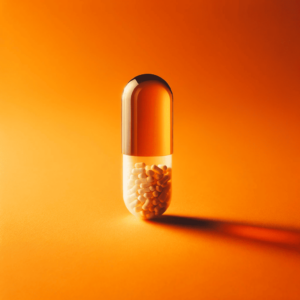
CONTROLLED RELEASE

Microencapsulation

MULTIPARTICULATE

aMORPHOUS sOLID dISPERSIONS

ORALLY DISINTEGRATING TABLETS

ABUSE DETERRENT

Taste-MAsking

BIOAVAILABILITY ENHANCEMENT
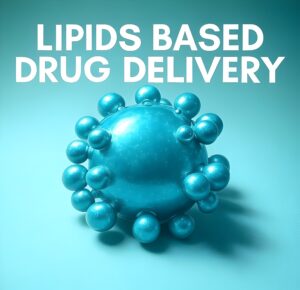
LIPID bASED dRUG dELIVERY
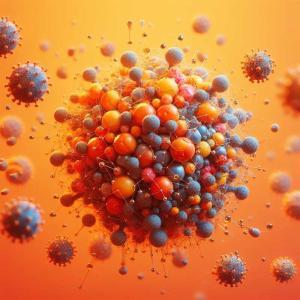
Nanoparticles

Nanocrystals

Polymeric Nanoparticles
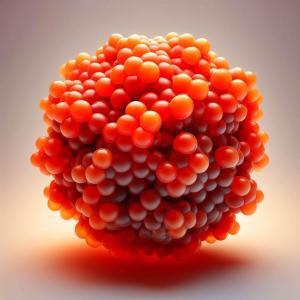
LIPID NANOPARTICLES (LNP)

Solid Lipid Nanoparticles

Nanostructured Lipid Carriers
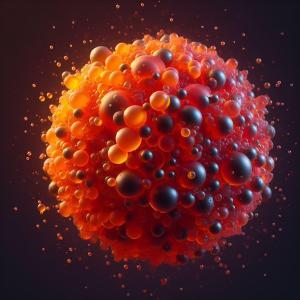
Nanoemulsions

Self-Emulsifying Drug Delivery Systems
Formulation Technologies Overview
CONTROLLED RELEASE
Controlled release formulations are meticulously engineered to dispense the drug at a specific, predetermined rate, thereby extending the therapeutic effect over an extended period and significantly enhancing patient adherence to medication regimens. The core principle behind these formulations is to ensure a sustained delivery of the active ingredient, maintaining its concentration within the therapeutic window for a prolonged duration, which minimizes the need for frequent dosing. This technology employs various mechanisms, such as diffusion-controlled, erosion-controlled, and osmotic-controlled systems, to achieve a controlled and consistent release profile.
MICROENCAPSULATION
Microencapsulation technology involves the sophisticated process of encasing minuscule particles or droplets of active pharmaceutical ingredients within a protective coating. This technique is particularly advantageous for safeguarding sensitive compounds from environmental factors such as light, moisture, and oxygen, thereby preventing their degradation. Additionally, microencapsulation allows for precise control over the release rates of the encapsulated materials, enabling tailored delivery profiles that can be immediate, delayed, or sustained. Furthermore, it is an effective method for masking unpleasant tastes and odors of active ingredients, thereby improving the palatability and patient acceptability of oral medications.
MULTIPARTICULATE
Multiparticulate drug delivery systems comprise numerous small discrete particles, each potentially containing a portion of the active ingredient. These systems offer several benefits, including uniform distribution of the drug throughout the gastrointestinal tract, which can lead to more consistent absorption and reduced risk of local irritation. The multiparticulate approach also provides flexibility in formulating dosage forms, such as capsules, sachets, or suspensions, which can enhance patient compliance, particularly in populations that have difficulty swallowing traditional tablets.
AMORPHOUS SOLID DISPERSIONS
Amorphous solid dispersions involve the dispersion of poorly soluble drugs within a polymer matrix, resulting in a non-crystalline, amorphous state that significantly enhances the drug’s solubility and bioavailability. This technology is vital for formulating drugs with inherently low aqueous solubility, which is a common challenge in pharmaceutical development. The polymer matrix not only stabilizes the amorphous form of the drug but also facilitates its dissolution by creating a supersaturated solution, thus improving the drug’s absorption and therapeutic efficacy.
ORALLY DISINTEGRATING TABLETS
Orally disintegrating tablets (ODTs) are specially formulated to dissolve or disintegrate rapidly in the mouth, typically within seconds, without the need for water. This delivery system is particularly beneficial for patients who have difficulty swallowing conventional tablets or capsules, such as pediatric, geriatric, and psychiatric patients. ODT technology combines the advantages of convenience and compliance, offering a user-friendly dosage form that ensures rapid onset of action as the drug is quickly absorbed through the oral mucosa or gastrointestinal tract.
ABUSE DETERRENT
Abuse-deterrent formulations are strategically developed to prevent the misuse and abuse of controlled substances, addressing a critical public health issue. These formulations incorporate physical and chemical barriers that make it difficult to manipulate the drug for non-medical use. Techniques such as incorporating excipients that create a viscous gel when tampered with, using antagonists that are activated upon misuse, and employing aversive agents that produce unpleasant effects when abused are all part of the multifaceted approach to deter abuse and enhance the safety profile of medications.
Bioavailability Enhancement Formulation Technology
Particle Size Reduction Technologies
We use advanced particle size reduction technologies, such as nanomilling and high-pressure homogenization, to significantly enhance the dissolution and absorption rates of drugs. Nanomilling involves the use of high-energy media mills to break down drug particles into the nanometer size range, dramatically increasing their surface area, which in turn enhances dissolution rates. High-pressure homogenization, on the other hand, utilizes intense pressure to force drug suspensions through narrow channels, resulting in the breakdown of particles into sub-micron sizes.
Lipid-Based Formulation Technologies
Our lipid-based formulations, including self-emulsifying drug delivery systems (SEDDS), represent a cornerstone of our innovative bioavailability enhancement toolkit. SEDDS are mixtures of oils, surfactants, and co-solvents that spontaneously form fine oil-in-water emulsions upon contact with gastrointestinal fluids. This formation of microemulsions significantly improves the solubilization and absorption of poorly water-soluble drugs. Lipid-based formulations enhance the permeability of these drugs through the intestinal wall by increasing their solubility in the gastrointestinal tract, protecting them from enzymatic degradation, and promoting lymphatic transport, bypassing the first-pass metabolism in the liver.
Prodrug Design
Our expertise in prodrug design is critical in improving the solubility, permeability, and bioavailability of challenging drugs. Prodrugs are chemically modified versions of active pharmaceutical ingredients that undergo metabolic conversion within the body to release the active drug. This strategic approach allows us to address various pharmacokinetic challenges by enhancing the solubility of the drug, improving its absorption through biological membranes, and increasing its stability in the bloodstream. By designing prodrugs that are more lipophilic, we can improve their permeability across cell membranes, facilitating better absorption and distribution throughout the body.
Solid-State Alteration Techniques
We utilize sophisticated solid-state alteration techniques, such as co-crystallization and solid-state amorphization, to positively impact the solubility and bioavailability of drugs. Co-crystallization involves the formation of crystalline structures composed of the drug and one or more co-formers, which can significantly alter the physicochemical properties of the drug, including its solubility and dissolution rate. Solid-state amorphization, on the other hand, converts the crystalline drug into an amorphous form, which lacks a defined long-range order, resulting in higher solubility and faster dissolution rates.
Drug Conjugates
Our development of drug conjugates is a sophisticated approach to enhancing the pharmacokinetic properties of therapeutic agents. By chemically linking drugs to various molecules, such as polymers we can improve their stability, solubility, and targeting ability. Drug conjugates are designed to deliver drugs more selectively to specific tissues or cells, thereby reducing off-target effects and improving the therapeutic index.
Nanotechnology and Advanced Materials
Nnotechnology and advanced materials provide targeted delivery and improved absorption of drugs, setting new standards in the effectiveness of drug delivery systems. Nanotechnology involves the manipulation of materials at the nanoscale, creating nanoparticles that can encapsulate drugs and protect them from degradation while enhancing their absorption and distribution in the body. These nanoparticles can be engineered to release their payload in response to specific biological stimuli, such as changes in pH or temperature, ensuring controlled and sustained drug release.
FAQs
Here are some frequently asked questions about Formulation Technologies
Formulation technology solutions involve the process of designing and developing the composition of a drug product, including the active pharmaceutical ingredient (API) and other non-active components, to ensure it is safe, effective, and stable.
This process is critical for pharmaceutical development as it directly impacts the drug's performance, patient compliance, and shelf-life. Effective formulation can improve the bioavailability of a drug, enhance its stability, and provide controlled release profiles, ensuring optimal therapeutic outcomes.
Hycon approaches new drug formulation development through a systematic process that includes:
- Pre-formulation studies: Characterizing the physical and chemical properties of the API to inform formulation strategy.
- Formulation design: Selecting appropriate excipients and designing the formulation to meet the desired product profile.
- Prototype development: Creating laboratory-scale batches for initial testing.
- Process development: Optimizing the manufacturing process for scalability and reproducibility.
- Stability testing: Assessing the formulation's stability under various conditions to predict its shelf life.
- Regulatory support: Ensuring the formulation meets all regulatory requirements for safety and efficacy.
Selecting excipients involves considering several key factors:
- Compatibility with the API: Excipients must not interact adversely with the API, affecting its stability or efficacy.
- Functional properties: The excipient should provide the desired functionality, such as enhancing solubility, providing controlled release, or improving taste.
- Safety profile: Excipients must be safe for the intended route of administration and patient population.
- Regulatory status: Excipients should be acceptable to regulatory authorities and comply with relevant guidelines.
- Manufacturability and cost: Considerations include the ease of sourcing, handling, and cost-effectiveness.
Scalability of drug formulations is a critical consideration for CDMOs, involving:
- Process optimization: Developing manufacturing processes that are efficient and scalable, from laboratory to commercial scale.
- Equipment selection: Utilizing flexible and scalable equipment that can accommodate different batch sizes.
- Quality control: Implementing robust quality control measures that ensure consistent product quality across all scales.
- Regulatory compliance: Ensuring that the scaled-up process and formulation meet all regulatory requirements for manufacturing and quality assurance.
Yes, Hycon can assist in enhancing the bioavailability of poorly soluble drugs through various formulation strategies and technologies, such as:
- Nanotechnology-based formulations: Reducing particle size to nanoscale to improve dissolution rates.
- Solid dispersions: Using polymers to disperse the drug in a solid matrix, enhancing solubility.
- Lipid-based delivery systems: Formulating the drug in lipid carriers to enhance intestinal absorption.
- Self-emulsifying drug delivery systems (SEDDS): Creating formulations that form emulsions in the gastrointestinal tract to improve solubility and absorption.
Stability studies are crucial in formulation development as they:
- Determine shelf life: Assess how long the drug product maintains its identity, strength, quality, and purity.
- Inform packaging: Identify appropriate packaging materials to protect the product from environmental factors.
- Guide storage conditions: Establish optimal storage conditions to maintain product stability.
- Regulatory requirement: Provide necessary data for regulatory submissions, demonstrating the product's stability over its intended shelf life.
CDMOs ensure regulatory compliance in formulation development by:
- Following guidelines: Adhering to current Good Manufacturing Practices (cGMP) and relevant guidelines from regulatory bodies like the FDA and EMA.
- Documentation: Maintaining comprehensive records of formulation development and manufacturing processes.
- Quality control and assurance: Implementing rigorous quality control and assurance procedures throughout development and manufacturing.
- Regulatory expertise: Employing experts who are familiar with regulatory requirements in various markets to guide formulation development and submission strategies.
Yes, CDMOs can provide controlled release formulations using various technologies and approaches, such as:
- Coatings: Applying polymer coatings to tablets or granules to control drug release rates.
- Matrix systems: Embedding the drug in a matrix that slowly dissolves or erodes, controlling the release.
- Microencapsulation: Encapsulating the drug in microspheres or microcapsules to achieve delayed or sustained release.
- Lipid formulations: Using lipids to modulate the release of the drug.
For pediatric and geriatric-friendly formulations, Hycon uses technologies such as:
- Mini-tablets and microtablets: Small-sized tablets that are easier to swallow.
- Orally disintegrating tablets (ODTs): Tablets that dissolve rapidly in the mouth, eliminating the need for water.
- Taste masking: Techniques to improve the palatability of oral medicines.
- Flexible dosing: Formulations that allow dose adjustments to meet individual patient needs.

